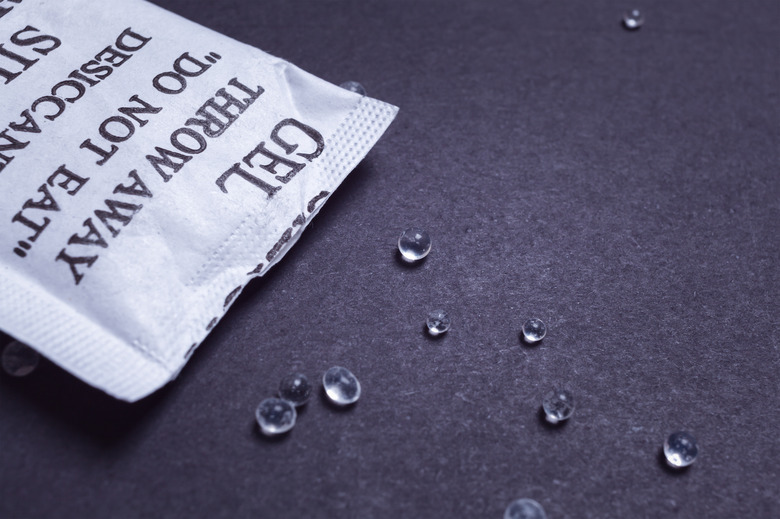Chemicals That Absorb Moisture
Desiccants are chemicals that readily absorb moisture from the surrounding atmosphere or dry it out; these are also called hygroscopic compounds. Many of them, though not all, are salts. They enjoy a variety of applications both in the lab and in commerce, where reducing moisture inside packaging can help slow degradation of food or other goods.
Common Desiccants
Common Desiccants
Calcium chloride, calcium sulfate, activated carbon, zeolites and silica gel are all common desiccants. Calcium chloride is also a popular ice-melter for roads and driveways. Zeolites are aluminosilicate minerals with numerous microscopic pores that help them effectively absorb various liquids and gases, this property makes them useful both in filtration and as desiccants. Silica gel is the pre-packaged desiccant inside many commercial products such as vitamin bottles.
Other Chemicals
Other Chemicals
Some chemicals absorb moisture effectively but are seldom employed as desiccants, either because they react with water, are highly reactive in general or have other undesirable properties. Potassium and sodium hydroxide pellets, for example, readily absorb moisture from the atmosphere, but both are strong bases and become corrosive liquids when dissolved in water. Lithium aluminum hydride absorbs water, but it is a potent base that reacts violently with water, that's why it is unsuitable as a desiccant. Some salts such as magnesium sulfate (Epsom salt) are typically available in the hydrated form, where the salt crystal already contains a specific ratio of water molecules for each formula unit of ionic compound, and these salts are safe desiccants in their anhydrous form.
Uses in the Lab
Uses in the Lab
Water can interfere with many reactions in the lab. Desiccants can help to remove moisture from the air if water is an undesirable ingredient in the reaction mixture. Lithium aluminum hydride and metals such as sodium, as mentioned before, react violently with water. Water can also affect the weight of an object, for example, a crucible containing a chemical that must be weighed; a desiccant can help dry out an object to ensure there is no water left. Desiccants often contain indicator crystals, salts that change color as they absorb water.
Uses Outside the Lab
Uses Outside the Lab
Commercial products such as vitamin tablets include desiccants in their packaging to increase their shelf life. Excess moisture inside the packaging could accelerate spoiling, while preserving a dry atmosphere will help to retard the growth of microbes. Cases for certain musical instruments often include desiccants to help prevent moisture damage. In 2010, the National Renewable Energy Laboratory proposed liquid desiccant air conditioning units as a way to achieve a more efficient cooling process for homes and businesses.
Cite This Article
MLA
Brennan, John. "Chemicals That Absorb Moisture" sciencing.com, https://www.sciencing.com/chemicals-absorb-moisture-8133780/. 4 May 2018.
APA
Brennan, John. (2018, May 4). Chemicals That Absorb Moisture. sciencing.com. Retrieved from https://www.sciencing.com/chemicals-absorb-moisture-8133780/
Chicago
Brennan, John. Chemicals That Absorb Moisture last modified March 24, 2022. https://www.sciencing.com/chemicals-absorb-moisture-8133780/
